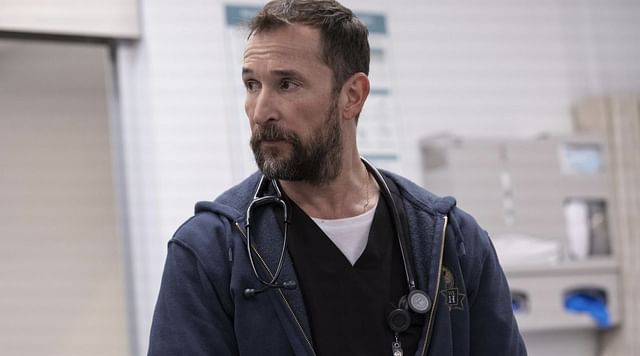
Why Pulse could be Netflix’s The Pitt
Pulse is Netflix’s new entry into the medical drama space and possibly the OTT's version of The Pitt. It officially dropped on April 3, 2025, with a ten-episode first season. Set inside Miami’s busiest Level 1 trauma center, the show wastes no time throwing viewers into chaos.
The story kicks off as a hurricane barrels toward the city, just as third-year resident Dr. Danny Simms, played by Reacher’s Willa Fitzgerald, is unexpectedly promoted to Chief Resident.
The Pitt is a medical drama that debuted on Max in January 2025. Set over a single 15-hour shift at Pittsburgh Trauma Medical Center, each episode covers one hour in real time. The series follows Dr. Michael “Robby” Rabinovitch (Noah Wyle) and his exhausted ER team as they handle nonstop trauma cases, hospital politics, and personal baggage—all without a break.
Pulse feels like Netflix’s version of The Pitt because of how it handles crisis. From the first episode, the hurricane isn’t just a backdrop—it’s an active threat.
Between a natural disaster, internal hospital politics, and personal drama, Pulse sets up a pressure-cooker environment that feels like it’s chasing the same real-time urgency and emotional exhaustion that made The Pitt on Max stand out.
Disclaimer: The article contains the author's opinion.
Can Pulse do for Netflix what The Pitt did for Max?
When disaster hits, urgency becomes the story

There’s no denying that The Pitt has raised the bar for what a medical drama can do in today’s streaming era. It’s fast, intense, and grounded in real issues. Netflix’s Pulse, which dropped its full ten-episode season on April 3, is clearly aiming for that same space.
While the two shows don’t look alike on paper—The Pitt unfolds in real-time over a single chaotic shift in Pittsburgh and Pulse is set in Miami during a hurricane—the emotional DNA is pretty similar. Both series put their characters through hell in a pressure-cooker hospital environment and force them to make choices that aren't clean or easy.
With no power, reinforcements, or enough staff, the hospital goes into lockdown as patients keep arriving. Like The Pitt, Pulse builds tension through urgency, not just for drama but to highlight the real struggles of medical workers in extreme situations.
Personal meltdowns inside professional chaos
Another connection is how Pulse integrates personal chaos into the professional setting. Just like The Pitt uses Dr. Robby’s trauma and mental fatigue as a running thread, Pulse leans into Danny and Xander’s wreck of a relationship. It’s not just drama for the sake of it. Their fallout bleeds into how the ER functions, which is exactly how stress shows up in real workplaces.
It’s not just them—Danny’s sister, Harper Simms, is also on the floor, along with surgical residents, med students, and nurses balancing work and personal struggles. The Pitt does the same, with characters like Trinity and McKay, who carry heavy burdens but still show up for their patients.

Casting also plays a role here. Willa Fitzgerald (Reacher) and Jessie T. Usher (The Boys) are both coming in hot from major genre shows. Just like Noah Wyle brought a history with ER to The Pitt, these actors bring instant familiarity.
Add Justina Machado as the ER’s tough but respected chair of surgery, and you’ve got a cast built for character-forward storytelling. If The Pitt is about emotional wear-and-tear over 15 relentless hours, Pulse aims to show how pressure explodes when disaster meets unresolved tension.
Both shows are about what it takes to survive the job. And Pulse, just like The Pitt, doesn’t pretend that heroism comes without cost.
Watch The Pitt on Max and Pulse on Netflix.
